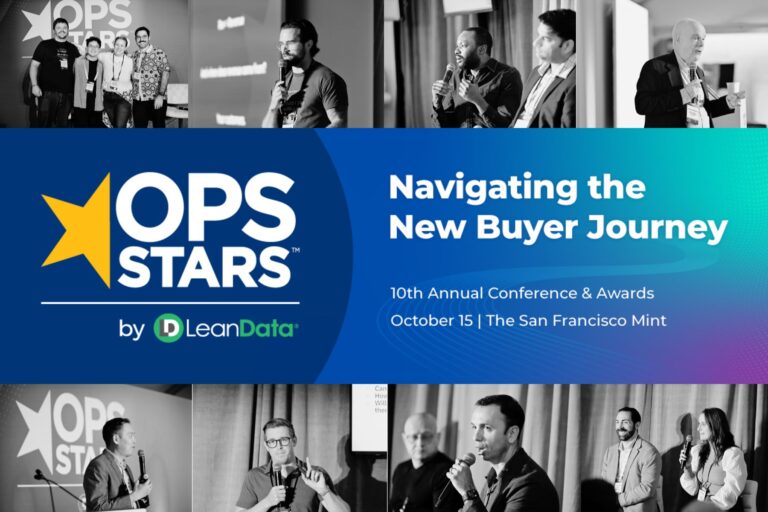Account-based Marketing (ABM), sometimes referred to as key account marketing, is a go-to-market (GTM) growth strategy based on account awareness, where a revenue team identifies and engages with individual customer accounts as markets of one. Some have referred to ABM as a marketing strategy akin to fishing with spears rather than nets.
Now, the last half of that fishing metaphor rings true, as traditional demand generation marketing strategies tend to involve casting a relatively wide net. However, it’s the first part of that definition — in particular, the words “marketing strategy” — that is emblematic of ABM’s biggest challenge.
ABM’s Biggest Challenge Lies In Its Name
Many organizations consider ABM solely a marketing strategy primarily because of its name. It’s a logical conclusion; the letter ‘M’ literally stands for “marketing.”
However, any experienced revenue team professional knows that an organization’s ABM strategy is only as effective as the alignment between its sales and marketing functions.
Despite its name, ABM is not a marketing initiative. Likewise, it’s also not a sales initiative. Effective ABM has always been — and always will be — a growth initiative!
Before your ABM program can take flight, your revenue team needs to fully align itself around the program and its objectives. This post delivers a quick read on key alignment considerations.
Align Around Common Goals
First, to create alignment, revenue team functions should discuss the question, “What are we trying to achieve with ABM?”
Pro tip: you won’t maximize the effectiveness of your ABM motion if you settle for the generic answer of “growth.”
The more specific you can be with your ABM goals, the better. Common goals of ABM initiatives include:
- Introducing a new product, solution or service to the market
- Increasing share in an established market
- Breaking into new markets, industry verticals and/or segments
- Earning business away from a particular competitor
- Expanding business with your existing customers through upsell/cross-sell opportunities
- Accelerating existing open opportunities stuck in the sales pipeline
Align on Key Performance Indicators (KPIs)
After ABM goals are collaboratively established and bought into by the entire revenue team, it’s time to drive alignment on KPIs. Together, the revenue team needs to determine how ABM performance will be measured, analyzed and evaluated.
Clearly define how the revenue team collects and measures engagement analytics across all outreach efforts, inclusive of sales, marketing and customer success functions. At a high level, revenue team leadership will, at a minimum, need to regularly review the following:
- Engaged accounts
- Opportunity accounts
- Opportunities created
- Marketing, sales and customer success influence/attribution
- Revenue won
- Average deal size
- Deal velocity
Additionally, from a tactical level, the team should measure and track paid media, landing page conversions, pipeline influence and a host of other KPIs.
Make KPIs readily accessible and informative by creating easy-to-interpret dashboards. Plus, review your ABM KPIs at every team meeting.
Align on Target Accounts
There is no ABM motion without target accounts. It’s called account-based for a reason.
The revenue team needs to align around a target account list that maps directly to its ABM goals. For example, if the primary goal of your ABM strategy is to take advantage of significant upsell and cross-sell opportunities at existing customers, your target account list should be composed entirely of customers. Any speculative prospecting at new accounts only diverts your scarce GTM resources.
It’s common to target aspirational accounts, or customers who’ve been tough nuts to crack in your past GTM efforts. However, resist the temptation to include those accounts if that’s the only reason they appear on your list.
Once you’ve built a preliminary target account list, ruthlessly scour it for any suspect accounts. Pro tip: understand your ideal customer profile (ICP) and use it as a benchmark with which to compare your target accounts.
Align on Lead, Contact and Account Data
Once your ABM initiative is in motion, a key driver of alignment is your lead, contact and account data. In fact, with proper design, your data systems and data will produce better alignment.
ABM motions are as customer-centric as GTM motions get. Remember, ABM is not about your company and your products, services and solutions, but rather about your target accounts and their needs. Your customer data spearheads that effort.
An absolute requirement for your target account list is that all lead data in the CRM is accurately matched to accounts. Use a quality lead-to-account matching solution to automate this process and free your revenue team to proactively engage accounts.
Additionally, ensure the entire revenue team has access and visibility into all your GTM plays to ensure account workflow and messaging is consistent. For example, when marketing runs a campaign directed at a target account, it needs to collaborate with the appropriate account executive to ensure outreach and messaging doesn’t come across as disjointed from the perspective of the customer. Similarly, if marketing has invested in campaigns toward a target account but the sales team doesn’t engage with follow up, the investment likely won’t post a return.
Use your lead, contact and account data as the thread to bring the functional groups of your revenue team even closer together.
Moving Forward with Effective ABM
To prevent the frequent starts and stops indicative of so many ABM initiatives, ensure your entire revenue team is aligned from the start. Doing so empowers you to engage with your target accounts with consistent messaging, while at the same time ensuring smooth, efficient handoffs of leads and contacts within your team.
With full revenue team alignment, you’ll prevent having your valuable customer account data hidden in silos. As a result, your team will benefit from the most fundamental necessity for a successful ABM motion — holistic, comprehensive views of target accounts and their engagement.












